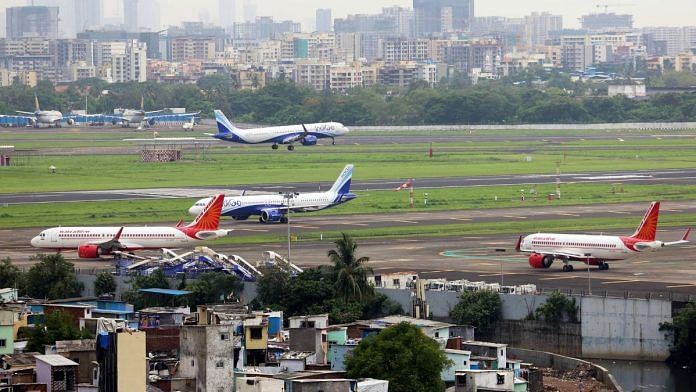The breathtaking irony here is that the loudest voices condemning privatisation conveniently ignore the grim legacy of government-run aviation: Three catastrophic crashes and countless ignored warnings since 2000. They remain conspicuously silent when bureaucratic lethargy and political apathy claim lives, but seize upon the first tragedy under private ownership as incontrovertible proof of market villainy.
Despite these ideological distractions, the broader truth remains unmistakable: Air travel, especially in India, remains remarkably safe. Billions of passengers have travelled across India over the last 25 years with only four crashes, an impressive safety record by any standard.
Ultimately, if financial pressures genuinely threaten passenger safety, the real culprit is government policy rather than corporate greed.
Socialist critics conveniently ignore that if financial pressure truly compromises safety, then government policies are the biggest culprit. Indian airlines operate under crushing regulatory and fiscal burdens that squeeze margins to dangerous levels.
Aviation turbine fuel (ATF) faces punitive taxation that cripples airline operations. As of mid-2025, ATF is hit by 11 per cent central excise duty plus up to 30 per cent state VAT. Since ATF remains, these taxes cascade, meaning fuel taxes often exceed 35 per cent of the base cost. This makes India one of the most expensive markets globally for airline fuel costs, which account.
Add to this the maze of regulatory compliance costs,, and, and you have a government-created environment where airlines struggle to maintain healthy cash flows. If the “profit over safety” theory held any water, these government-imposed financial pressures would be the primary safety risk.
Yet somehow, private airlines operating under these same punitive conditions maintain better safety records than the government airlines that had none of these competitive pressures. This reveals the fundamental flaw in the socialist argument: Profit motive doesn’t threaten safety; operational excellence and accountability under private ownership actually enhance it.
These crashes also expose deeper problems with State-managed aviation infrastructure that go beyond individual airline operations.
Patna Airport obstructions: While the Alliance Air crash in 2000 was caused by pilot error, it prompted safety investigations that revealed serious infrastructure problems at Patna airport. The DGCA identified 101 obstructions, including trees, which made it one of the most dangerous airports in the country.
The Bihar government causing the obstruction, forcing airlines to operate with drastically reduced passenger loads. It took 12 years and the threat of a complete airport shutdown before they even cut a single tree. The government’s apathy was staggering—they preferred risking airport closure over basic tree removal, despite knowing passengers’ lives were at stake. Even after finally acting, lapses in pruning persist till today. The airport for years due to these unresolved obstructions.
This pattern reveals a chronic inability to maintain basic safety protocols. even two decades after the fatal accident, showing exactly how bureaucratic dysfunction compromises aviation infrastructure.
The Mangaluru runway extension: The Mangaluru crash exposed another critical infrastructure failure. Immediately after the 2010 crash that killed 158 people, the aviation ministry promised the runway would be extended by 1,000 metres to make it safer for aircraft operations. More than 14 years later, this extension still hasn’t happened.
When asked to fund runway safety improvements after 158 deaths, the Karnataka government refused, explicitly stating, “” Meanwhile, the Airports Authority of India claimed “shortage of funds” while investing elsewhere. What makes this worse is that AAI has been investing in, which have had zero passengers for months, while refusing to fund safety improvements where 158 people died.
The Karnataka government’s pattern of choosing money over safety is consistent. The mandatory “safety basic strip” recommended by the DGCA also remains unimplemented. After the airport was privatised in 2021, the Airports Authority sought 32.97 acres for required safety buffers. But the free of cost, arguing the private operator should pay.
Twice, the same government has explicitly prioritised financial considerations over passenger safety—the exact behaviour socialists falsely attribute to private companies.
The contrast is staggering: unlimited funds for vanity projects with zero passengers, but “shortage of funds” for safety measures after mass casualties.
The Kozhikode “murder”: The 2020 Kozhikode crash is perhaps the most damning example of government negligence. This wasn’t just “challenging weather conditions”—this was a preventable disaster at an airport that aviation experts had been warning about for nearly a decade. The DGCA itself had designated Kozhikode as a “critical airfield” and “unsafe” for wet weather operations. Captain Mohan Ranganathan, a member of the Ministry of Civil Aviation’s safety advisory committee, that the airport’s tabletop runway design, inadequate buffer zones (90m instead of the recommended 240m), and lack of safety systems made it dangerous. The airport had multiple cracks in runways, pools of stagnant water, and excessive rubber deposits. The DGCA had even issued a show-cause notice in 2019 after finding these hazards. Yet nothing was done. The warnings were ignored for years, and as Ranganathan said after the crash, “”
The government’s failure to follow through on basic safety infrastructure improvements—despite multiple tragedies and expert warnings—speaks volumes about the sluggish pace of State-led safety initiatives. Private airport operators face the same regulatory constraints, but they have stronger incentives to navigate these challenges proactively rather than wait for tragedies to force action. Inter-governmental coordination affecting aviation safety infrastructure is a recurring theme across many Indian airports—and it’s a problem that government ownership of airlines cannot solve, because the airlines themselves don’t control the airports.
The impeccable safety record of private airlines like IndiGo demonstrates that market-driven safety improvements and accountability surpass government management. IndiGo operates over 1,800 flights daily and has carried hundreds of millions of passengers without a single fatal accident. When SpiceJet faced safety incidents in 2022,—market discipline worked exactly as it should. Airlines that crash don’t stay in business, creating immediate consequences that government monopolies never faced.
India’s aviation safety record demonstrates that air travel remains very safe when you consider the scale. Over the past 25 years, Indian airlines have operated millions of flights carrying billions of passengers. Four accidents over this period, in a country with challenging weather conditions, diverse topography, and rapidly expanding air traffic, show that aviation safety has been maintained despite massive growth.
Compare this to—the contrast is stark. This safety record across India’s aviation sector shows that market-driven aviation works.
Real safety improvements come from understanding the complete picture: Infrastructure coordination failures between government agencies, policy pressures that squeeze airline margins, and market forces that reward operational excellence. The evidence shows that government apathy, willful negligence, and State-imposed financial pressures create the very risks that critics falsely attribute to privatisation.
Meanwhile, market accountability ensures immediate consequences for safety lapses through passenger avoidance, massive compensation payouts, and catastrophic aircraft losses—incentives that simply didn’t exist under government monopoly.
It’s easy and tempting to cast private airlines as villains to satisfy ideological biases, but tragedies deserve sober analysis, not sensationalism. Critics circling this tragedy are doing a disservice to the victims and their families by peddling predetermined narratives instead of waiting for facts. We should wait for the investigation to conclude, examine the actual causes, and have an honest conversation about aviation safety based on data, not dogma. The victims of Flight 171 deserve better than the lazy, predictable scapegoating of privatisation.
(Edited by Theres Sudeep)








